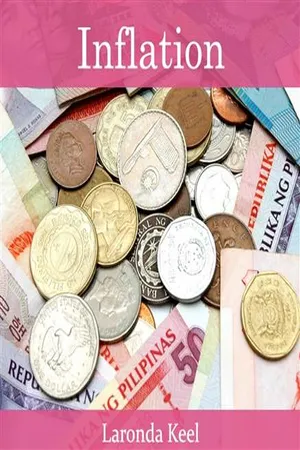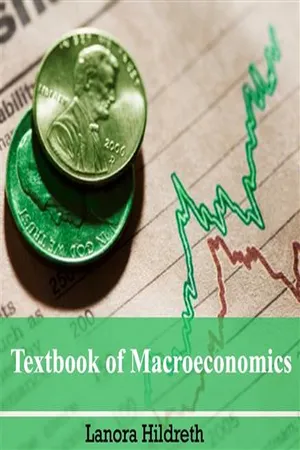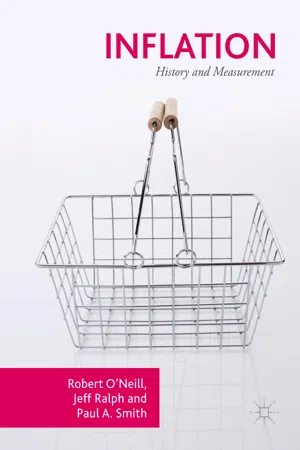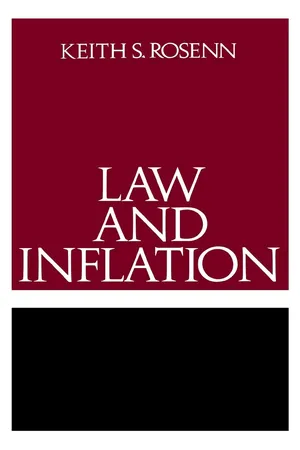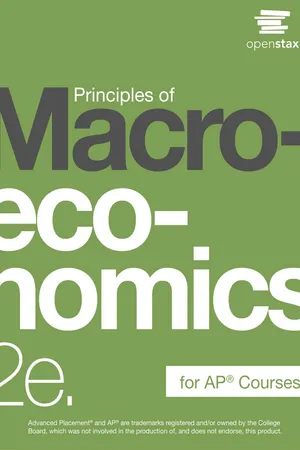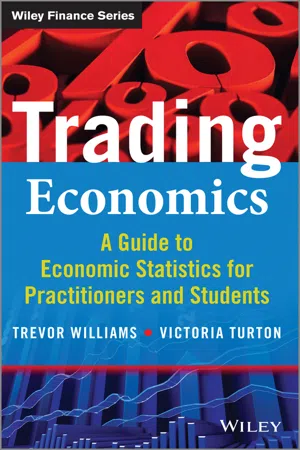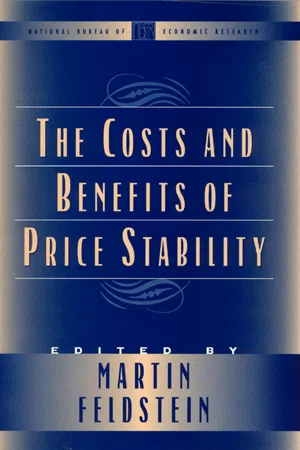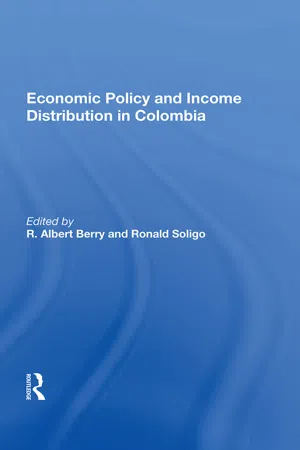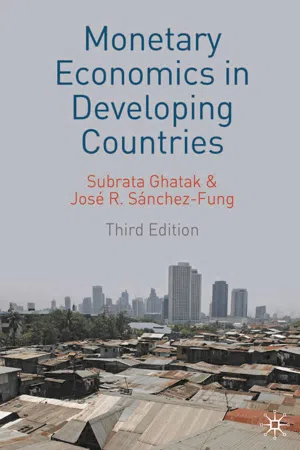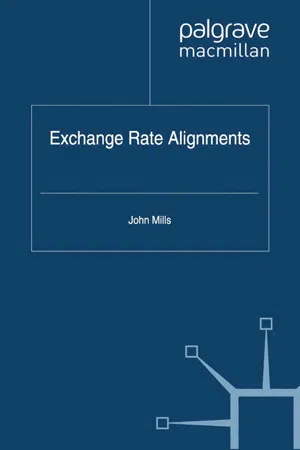Economics
Costs of Inflation
The costs of inflation refer to the negative impacts that rising prices can have on an economy. These costs include reduced purchasing power, uncertainty for businesses and consumers, and distortions in the allocation of resources. Inflation can also lead to higher interest rates and reduced real returns on savings and investments.
Written by Perlego with AI-assistance
Related key terms
1 of 5
11 Key excerpts on "Costs of Inflation"
- No longer available |Learn more
- (Author)
- 2014(Publication Date)
- Orange Apple(Publisher)
____________________ WORLD TECHNOLOGIES ____________________ Chapter- 1 Inflation In economics, inflation is a rise in the general level of prices of goods and services in an economy over a period of time. When the general price level rises, each unit of currency buys fewer goods and services. Consequently, inflation also reflects an erosion in the purchasing power of money – a loss of real value in the internal medium of exchange and unit of account in the economy. A chief measure of price inflation is the inflation rate, the annualized percentage change in a general price index (normally the Consumer Price Index) over time. Inflation's effects on an economy are various and can be simultaneously positive and negative. Negative effects of inflation include a decrease in the real value of money and other monetary items over time, uncertainty over future inflation may discourage investment and savings, and high inflation may lead to shortages of goods if consumers begin hoarding out of concern that prices will increase in the future. Positive effects include ensuring central banks can adjust nominal interest rates (intended to mitigate recessions), and encouraging investment in non-monetary capital projects. Economists generally agree that high rates of inflation and hyperinflation are caused by an excessive growth of the money supply. Views on which factors determine low to moderate rates of inflation are more varied. Low or moderate inflation may be attributed to fluctuations in real demand for goods and services, or changes in available supplies such as during scarcities, as well as to growth in the money supply. However, the consensus view is that a long sustained period of inflation is caused by money supply growing faster than the rate of economic growth. Today, most mainstream economists favor a low steady rate of inflation. - No longer available |Learn more
- (Author)
- 2014(Publication Date)
- White Word Publications(Publisher)
____________________ WORLD TECHNOLOGIES ____________________ Chapter-7 Inflation In economics, inflation is a rise in the general level of prices of goods and services in an economy over a period of time. When the general price level rises, each unit of currency buys fewer goods and services. Consequently, inflation also reflects an erosion in the purchasing power of money – a loss of real value in the internal medium of exchange and unit of account in the economy. A chief measure of price inflation is the inflation rate, the annualized percentage change in a general price index (normally the Consumer Price Index) over time. Inflation's effects on an economy are various and can be simultaneously positive and negative. Negative effects of inflation include a decrease in the real value of money and other monetary items over time, uncertainty over future inflation may discourage investment and savings, and high inflation may lead to shortages of goods if consumers begin hoarding out of concern that prices will increase in the future. Positive effects include ensuring central banks can adjust nominal interest rates (intended to mitigate recessions), and encouraging investment in non-monetary capital projects. Economists generally agree that high rates of inflation and hyperinflation are caused by an excessive growth of the money supply. Views on which factors determine low to moderate rates of inflation are more varied. Low or moderate inflation may be attributed to fluctuations in real demand for goods and services, or changes in available supplies such as during scarcities, as well as to growth in the money supply. However, the consensus view is that a long sustained period of inflation is caused by money supply growing faster than the rate of economic growth. Today, most mainstream economists favor a low, steady rate of inflation. - eBook - PDF
Inflation
History and Measurement
- Robert O'Neill, Jeff Ralph, Paul A. Smith(Authors)
- 2017(Publication Date)
- Palgrave Macmillan(Publisher)
For example, if inflation was regularly large, and prices change sig- nificantly on a regular basis, then businesses would be forced to regu- larly revise their prices and publish them accordingly. Advertising such changes comes at a cost to businesses, and as a result of these menu costs, price lists will not necessarily adjust to reflect changes in the purchasing power of money immediately. In addition to menu costs, economists will also talk about the expe- rience of shoe leather costs being related to periods of inflation. This reflects the fact that as prices change investors will have to shop around 2 What Is Inflation? 27 for the best deals and that the time used is a cost to economic agents as they have to allocate some of their valuable economic resources, particu- larly time, to disentangle the effects of inflation. It is possible for inflation to bring about some redistribution of the wealth across the economy, whether these redistributions are good or bad may be a matter of personal judgement regarding the position of the parties involved. Imagine an individual obtains a mortgage from a bank which has a fixed rate of interest of 5% per annum. If the house is purchased for £200,000 and (for the sake of simplicity) we assume no repayments are made over the 5 years for which the interest is fixed, then the value of the debt at the end of the 5 year period is £255,263. Now, assume that the person’s salary is £50,000 at the start of the period and their salary increases in line with inflation. If inflation soars, due to an unexpected event, and inflation is 20% per annum 6 then the final salary will be £124,416. At the beginning of the period, the person owed 4 times their annual income, while at the end of the period they owe only 2.05 times their annual income, while the value of the debt to the bank has increased in terms of the amount owed but has decreased in real terms. - eBook - PDF
- Keith S. Rosenn(Author)
- 2015(Publication Date)
- University of Pennsylvania Press(Publisher)
INFLATION'S CAUSES AND CURES The term inflation is often used loosely in English to mean anything from pomposity to increases in money, income, and profits. 1 For the pur-poses of this book, inflation is used to refer either to a sustained rise in an economy's general level of prices or to a corresponding fall in the domestic purchasing power of an economy's currency. This working definition im-plies that inflation is a dynamic process in which the aggregate level of prices is moving upward over time while the purchasing power of money is in corresponding decline. It does not mean that all prices are moving upward uniformly, nor even that all prices are moving upward. It does mean that an economy is undergoing inflation when it presently costs more to purchase a representative sample of goods than it cost in the past. Inflation and its opposite, deflation, describe changes in a nation's internal price levels or its currency's domestic purchasing power. Changes in a currency's external purchasing power occur through adjust-ments in the foreign exchange rate. When the value of country A's cur-rency declines relative to the currency of country B, there has been a devaluation of country A's currency. Correspondingly, there has been an upward revaluation in country B's currency relative to country A. In com-mon parlance references to changes in internal and external purchasing power of a currency are frequently commingled; it is not uncommon to find courts confusingly referring to devaluation when they really mean depreciation in domestic purchasing power. 2 In the long run, countries experiencing inflation rates higher than those of customary trading part-ners will be forced to devalue; however, in the short run, it is frequently possible for countries to maintain the same exchange rate despite sub-stantial domestic inflation, or to devalue by less than the inflation rate differential. - eBook - PDF
- Steven A. Greenlaw, Timothy Taylor(Authors)
- 2014(Publication Date)
- Openstax(Publisher)
Inflation, on the other hand, means that there is pressure for prices to rise in most markets in the economy. In addition, price increases in the supply-and-demand model were one-time events, representing a shift from a previous equilibrium to a new one. Inflation implies an ongoing rise in prices. If inflation happened for one year and then stopped—well, then it would not be inflation any more. This chapter begins by showing how to combine prices of individual goods and services to create a measure of overall inflation. It discusses the historical and recent experience of inflation, both in the United States and in other countries around the world. Other chapters have sometimes included a note under an exhibit or a parenthetical reminder in the text saying that the numbers have been adjusted for inflation. In this chapter, it is time to show how to use inflation statistics to adjust other economic variables, so that you can tell how much of, say, the rise in GDP over different periods of time can be attributed to an actual increase in the production of goods and services and how much should be attributed to the fact that prices for most things have risen. Inflation has consequences for people and firms throughout the economy, in their roles as lenders and borrowers, wage-earners, taxpayers, and consumers. The chapter concludes with a discussion of some imperfections and biases in the inflation statistics, and a preview of policies for fighting inflation that will be discussed in other chapters. 9.1 | Tracking Inflation By the end of this section, you will be able to: • Calculate the annual rate of inflation • Explain and use index numbers and base years when simplifying the total quantity spent over a year for products • Calculate inflation rates using index numbers Dinner table conversations where you might have heard about inflation usually entail reminiscing about when “everything seemed to cost so much less. - Steven A. Greenlaw, Timothy Taylor, David Shapiro(Authors)
- 2017(Publication Date)
- Openstax(Publisher)
A relative price change occurs when you see that the price of tuition has risen, but the price of laptops has fallen. Inflation, on the other hand, means that there is pressure for prices to rise in most markets in the economy. In addition, price increases in the supply-and-demand model were one-time events, representing a shift from a previous equilibrium to a new one. Inflation implies an ongoing rise in prices. If inflation happened for one year and then stopped, then it would not be inflation any more. This chapter begins by showing how to combine prices of individual goods and services to create a measure of overall inflation. It discusses the historical and recent experience of inflation, both in the United States and in other countries around the world. Other chapters have sometimes included a note under an exhibit or a parenthetical reminder in the text saying that the numbers have been adjusted for inflation. In this chapter, it is time to show how to use inflation statistics to adjust other economic variables, so that you can tell how much of, for example, we can attribute the rise in GDP over different periods of time to an actual increase in the production of goods and services and how much we should attribute to the fact that prices for most items have risen. Inflation has consequences for people and firms throughout the economy, in their roles as lenders and borrowers, wage-earners, taxpayers, and consumers. The chapter concludes with a discussion of some imperfections and biases in the inflation statistics, and a preview of policies for fighting inflation that we will discuss in other chapters.- eBook - PDF
Trading Economics
A Guide to Economic Statistics for Practitioners and Students
- Trevor Williams, Victoria Turton(Authors)
- 2014(Publication Date)
- Wiley(Publisher)
4 Inflation Inflation is always and everywhere a monetary phenomenon in the sense that it is and can be produced only by a more rapid increase in the quantity of money than in output. Milton Friedman 1 WHAT IS INFLATION? Inflation tells us the changing (increasing) price of a range of goods or services; basically how much of something we can get for our money. The rate of change of prices – the speed at which the price of goods and services that are bought by households or businesses alter – is called inflation. But prices can also fall, in a process called deflation, sometimes termed negative inflation. Inflation is more common than deflation, or at least it has been in the last 50 years or so, and so it has become associated with changes in the price of goods and services. Historically, however, price falls were as common as price rises, as we will see later. Both inflation and deflation have advantages and disadvantages, which we will explore in more detail later in this chapter. THE HISTORY OF INFLATION Inflation has been around for a long time, but, as Figure 4.1 shows, the level of prices (the index) really only rose consistently and sharply in the UK from the 1970s onwards. This was after the US came off the gold standards and the Bretton Woods system of fixed exchange rates, which had prevailed after the Second World War, ended. Money was now backed by government fiat and trust rather than by gold. And exchange rates were no longer fixed but allowed to float freely. This seems to have led to a rapid rise in the level of prices or, in other words, to the Retail Prices Index. Before that, for hundreds of years, the level 1 Friedman, M., The Counter-Revolution in Monetary Theory (1970). 100 Trading Economics Retail Price Index (1987 = 100) 0 10 20 30 40 50 60 70 80 90 100 1264 1296 1328 1360 1392 1424 1456 1488 1520 1552 1584 1616 1648 1680 1712 1744 1776 1808 1840 1872 1904 1936 1968 2000 Figure 4.1 Price index over time. - eBook - PDF
- Martin Feldstein(Author)
- 2007(Publication Date)
- University of Chicago Press(Publisher)
Inflation not only reduces the level of investment but also the efficiency with which productive factors are used. It has a negative temporary impact on long- term growth rates, which, in turn, generates a permanent fall in income per capita. Our results suggest that the marginal cost of inflation diminishes with the inflation rate. The estimated benefit of a permanent reduction of inflation by 1 percentage point depends on the starting level of inflation. Thus reducing the inflation rate from, say, 20 to 19 percent may increase output by 0.5 percent in the long run. This benefit increases with further reductions in inflation and might be twice as large when inflation reaches a low 5 percent. These benefits seem to be lower than others reported in the literature, but some evidence sug- gests that they might be underestimated since there is a positive causation run- ning from growth to inflation, in particular for economies with fixed exchange rates. It must also be noted that these estimates are obtained in models dis- playing a fast convergence rate, so that the present value of the benefits of dis- inflation might be quite sizable. Overall, these results indicate that the long- run Costs of Inflation are nonnegligible and that efforts to keep inflation under control will sooner or later pay off in terms of better long-run performance and higher per capita income. References AndrCs, J., E. BoscB, and R. DomCnech. 1996. Testing the neoclassical growth model: A causality approach. Mimeograph. AndrCs, J., R. DomCnech, and C. Molinas. 1996. Macroeconomic performance and convergence in OECD countries. European Economic Review 40: 1683-1704. AndrCs, J., I. Hernando, and M. Kriiger. 1996. Growth, inflation and the exchange rate regime. Economics Letters 53:61-65. Balassa, B. 1964. The purchasing power parity doctrine:A reappraisal. Journal of Polit- ical Economy 72584-96. Barro, R. 1995. Inflation and economic growth. Bank of England Economic Bulletin 35 (May): 1-11. - R. Albert Berry(Author)
- 2019(Publication Date)
- Routledge(Publisher)
Hence, the double importance of judging how inflation affects distribution. There are many reasons to believe that the effects of a continuous and, there-fore, generally anticipated inflation on the real values of economic variables would be different from those of an unanticipated one, usually synonomous with an acceleration of the rate of price increase. Under some conditions in theory an anticipated inflation would have little effect on real variables, although in a devel- EFFECfS OF INFLATION 115 oping country like Colombia with many market imperfections even a fully pre-dicted and stable level of inflation may have significant distributional effects. When inflation is above 5 percent, the rate is seldom stable for long; hence dis-cussions of the impact of inflation on output, distribution, or whatever, are usually discussions of changes in the rate of inflation. Since the rate of price in-crease is not the same in all sectors, relative prices change during the course of an inflationary period; thus, food prices may rise quickly when the rate of in-crease of the general price index is accelerating while rents may lag, but in the subsequent deceleration the opposite may be true. These changes in relative prices may be important for an analysis of the income distribution effects of inflation, since persons at different income levels purchase different bundles of goods. If an unanticipated increase in the rate of inflation worsened distribution and an unanticipated decrease improved it, a burst of rapid inflation followed by a return to the normal level (to which the system has become accustomed) might affect distribution as indicated in Figure 4.la; i.e., in the same direction but with some lag. The total impact is different at different points of time and must be described accordingly; after the cycle has been completed, distribution might be better (as shown in the figure) or worse-this being a matter requiring demonstra-tion.- eBook - PDF
- Subrata Ghatak, José R. Sánchez-Fung(Authors)
- 2017(Publication Date)
- Red Globe Press(Publisher)
It will be remembered that Willett and Logue (1976) found a statistically significant relationship between the level of inflation and its variability as measured by its standard deviation: high inflations are relatively unstable inflations. An important implication of this is that expectations regarding the inflation rate will frequently not be realized. This increases uncertainty ............................................... Money, inflation and growth 169 Table 9.1 Indonesia: government expenditure and revenue, 1960 prices (in billions of rupiahs) Expenditure Revenue Deficit Rate of inflation 1960 58 3 50 3 8 0 15 1 1961 64 0 45 0 19 0 39 3 1962 32 2 19 4 12 8 80 1 1963 38 4 18 9 19 5 88 9 1964 18 1 8 5 9 6 57 7 Sources : Hicks (1967); rate of inflation from Aghevli and Khan (1977). and will tend to reduce the willingness of people to engage in long-term contracts. The pattern of investment may therefore be distorted towards short-term projects, which may well yield lower social returns than long-term ones. It is a great mistake when analysing the effects of inflation to concentrate on possible effects on the level of investment to the exclusion of its composition (see, for example, Shaalan, 1962; Dorrance, 1963; Shaw, 1973; McKinnon, 1973 for discussion of this point). A further point is that at high and unstable rates of inflation, the efficiency of the price system as an indicator of desirable resource allocation is hindered. Not all prices adjust instantaneously to excess demand (this will be especially so in the case of public utilities, whose rates are often fixed for long periods of time, as is the foreign exchange rate), and therefore at any given time relative prices will be distorted by lags in adjustment in some sectors relative to others. This can be expected to produce adverse effects on the pattern of investment and resource allocation, thus reducing the overall efficiency of the economy. - eBook - PDF
- J. Mills(Author)
- 2012(Publication Date)
- Palgrave Macmillan(Publisher)
There is much evidence that the problems with inflation are more diverse and more manageable than is often recognised. Devaluation and the price level Those who believe that exchange-rate changes will affect prices are right in at least one sense. Any parity reduction is bound to exert upward pressure on the costs of all imported goods and services in the devaluing country. While the prices measured in the domestic currency of both imports and exports will almost certainly rise, the tendency for import costs to increase faster than export prices may worsen the terms of trade. In this sense, too, there is a direct cost to the economy. Furthermore, there is no value in a policy of depreciation unless it makes imports more expensive rela- tive to home market production. A major objective has to be to price out some imports by making it relatively cheaper than it was previously to produce locally rather than in other countries. It follows that without price increases for imported goods and serv- ices, there will be no new bias towards production from domestic output. 46 Exchange Rate Alignments The evidence presented in Table 3.1, however, indicates that other factors have to be taken into account. If, as is commonly supposed, only import prices were significant, then the figures in the table would show increasing inflation and declining living standards after a depreciation and not, generally speaking, the opposite. How then are the figures in the table to be explained? The answer is that devaluation’s impact on the price level is more complicated than is often recognised. Many effects are disinflationary rather than the reverse and tend to increase national income rather than reduce it. Obviously, the more exposed an economy is to foreign trade, the greater the immediate impact of exchange-rate changes on living standards and the price level.
Index pages curate the most relevant extracts from our library of academic textbooks. They’ve been created using an in-house natural language model (NLM), each adding context and meaning to key research topics.
